These days, if you don’t promote your books, you’re unlikely to sell them. Marketing is essential, but often it is not enough to move the needle on sales. Promotion is key. That's why today, the Alliance of Independent Authors AskALLi team is continuing the seven processes of publishing series with book promotion.
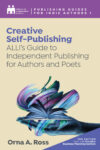 This article complements ALLi's guidebook Creative Self-Publishing. This book is available for purchase in multiple formats in our bookstore. Members enjoy free access to the ebook. (Login and navigate to Publications>Guidebooks.)
This article complements ALLi's guidebook Creative Self-Publishing. This book is available for purchase in multiple formats in our bookstore. Members enjoy free access to the ebook. (Login and navigate to Publications>Guidebooks.)
An overview of the seven processes can be found in this post. The rest of the processes can be found here:
What is the difference between Marketing and Promotion?
Often used synonymously, marketing and promotion are not the same thing. But both are equally necessary processes for publication.
Marketing is about drawing readers to you. Books are marketed to ensure someone finds them. It is about getting categories, metadata, author platforms, descriptions, covers branded and optimised to draw the right readers.
Promotion goes a step beyond into actively pushing the book to the right readers. It has a start and an end date, a definite goal and is only for a limited time period. Promotions vary based on the goal. They might include book launches, virtual or real-life book tours, advertising and other purchased promotions, and book-specific activities.
Despite these differences, book promotion and marketing are not mutually exclusive. They depend on each other, like any other process of publishing.
Why should you promote?
While marketing is almost an organic outreach activity, the online bookstores are crowded with thousands of books in any sub-genre. It is harder to attract readers who are searching for a book like yours simply by putting your book up with the right metadata. No matter how ravenous readers in your niche might be, we all have twenty-four hours. With other books like yours vying for their attention, your right readers might never find you, let alone get to your books.
That’s when promotion helps. It is meant to draw eyes to your books or your brand. Armed with the right marketing (metadata, categories, branding, website, newsletter sign up), promotion invites the right readers into your funnel. It leads them to the discounted book/new release, then to your other books and series, maybe even a higher priced product. The effects of a promotion are meant to garner sales, or a rise in publicity of your author brand, and last for a while after the promotion ends.
When should you run a promotion?
Every promotion needs to have a particular goal. And there should be a reason you are running the promotion at a particular time. It might be for the launch of your book, or a special sale for a particular season or you might be looking to rejuvenate a backlist.
Once you have the goals decided (remember to create SMART: Specific, Measurable, Attainable, Relevant and Timely goals), go through the marketing checklist. Make sure your website works, the reader magnet is promptly delivered, the books are priced according to your promotion, you have your ad copy and graphics done… get your marketing ducks in a row. This gives your promotion the rocket fuel it needs to reach Mars instead of plopping down on the Moon. Then it’s time to promote.
What are you promoting?
While for most authors this means books, your SMART goals will help you here. Think about your overall goals for your author business and career. Your promotion should work in the direction of these overall goals, and not be an ad hoc tangential drive. Your goals will differ based on where you are in your career, your genre, and your reach.
Your target might even be different from the tool you use to get there — to promote your new release, you drive audiences to your newly discounted previous book in a series to get a greater bang for your buck. Or you might have a course related to your books you want to sell, or promote your subscription service or a new preorder… but you’re advertising your permafree instead, which in turn draws eyes to whatever you want to sell. It will depend.
How much should you spend for a promotion?
The author, the creative, the maker in us would spend everything to get their books to the right readers. It’s the job of the marketeer and manager to reign her in. In promotion, the business head must always take the driver’s seat.
As Skye Warren explained, “If a book is going to make 5X what we put into it, then we should put more. If a book is going to make 1.5X what we put into it, then we should put less. And if a book is going to only make back half of what we put into it, if it’s going to lose money, we should put nothing. Which is hard to accept when we love our books. When we’ve invested a huge amount of time dreaming and writing and revising. When we’ve already put money into editing and cover design. When a little voice whispers in our heads, what if you just need to spend even more money? What if that will make this book a bestseller? Money makes something more of what it already is. If the book is a bestseller, then adding money will help it sell more.”
Promotion is about always, for each book and series and goal, doing a cost-benefit analysis. It is as tediously business-like as being an author might get. But think, and be frank. If I put in $X, how much do I really think I’ll make back?
You won’t be accurate, budgets and forecasts never are. But they are a ballpark figure that teaches you what you should do next time out. It tells you whether your expectations were too high or too low. Or whether your promotion worked or failed as per average standards. Next time, keep this in mind.
Also note here, that benefits should be linked to the entire goal of doing this promotion. And it may not always be a financial success measure. Your goal might be to get your name out there, or to increase your mailing list, or establish yourself as a leader in your genre. If you are closer to meeting this goal, than what you would have been utilising the initial monetary (or any other resource) outlay for another opportunity, you’ve been successful. Accountants call this opportunity cost.
The successful promotion checklist:
There are seven aspects of promotion you need to ensure you have before you run a promotion. All of this ties in with what is mentioned earlier in this article: you should have a goal for a promotion and have your marketing checklist ticked off first.
Then…
1. Who do you want to target? Your current readers or new ones?
Based on why you are promoting, think of who you are promoting to. Do you want to actively find new readers, or remind your existing ones to try out something new?
They may each be your ideal readers, but in marketing terms they are cold to warm audiences. That means someone who might like your book but has never heard of you is harder to convince to try your new offering than someone who’s read all your books. Make sure you know which section of your ideal readers you are targeting. The more niche, the better.
2. Where does your target audience hang out?
Your warmest target audience might be on an exclusive Discord group, or in your mailing lists. Your cold audiences are hanging out on social media. They might follow you but they have never engaged with your content. However, all these groups are made of your ideal readers, a persona who you should know as well as you know your protagonist.
When actively selling, you need to meet your audiences than them coming over to shake your hand. So approach them where they like to hang out, preferably in a forum, group or social media which is in line with your books.
3. Bespoke ad copy, graphics, and tone
Your target audience should dictate the ad copy, graphics and tone. Your core readers will laugh at a joke whispered in the sheets between the book cover. Someone who’s never picked up your books, hasn’t even met your characters, won’t know what you’re on about if you tell them that joke. Introduce your characters to cold audiences as you would a friend, instead of referencing something they’ll never understand.
4. What is the goal of your promotion?
We spoke about goals earlier. But it is very important to note that your promotion goals must line up with your overall objectives. And as discussed in CSP, your objectives are linked to you passion, mission, and values. Following generic advice to the T might actually lead you away from what you wanted to achieve in the first place. If you’re headed to Mars, move in that direction, instead of veering towards Venus.
5. How much have you planned to spend?
A cost and benefit analysis and return on investment are measured after a promotion. So how do you know how much to spend before you promote? Look at your book sales, your reviews, the indicators that signal the popularity of whatever you’re trying to achieve. That’ll help you pencil in a figure beside your measures, and keep you from overspending.
6. Plan it all out
Book promotion is like a battle plan. It should be flexible enough to respond to the situation and be proactively strategic.

Author Shanaya Wagh
Shanaya Wagh says, “I like to make a list of everything that needs to be co-ordinated beforehand: pricing, ad copy, illustrations etc. and know by what date what needs to happen. While most retailers allow you to adjust pricing until the day of the promotion, it might be harder to get the correct in-house promotion or a newsletter listing at the last moment. You might miss out on somethings, but I like to sketch out my battle plan to ensure I get to most things on my list.”
Once you’ve got all this down, you’re good to go ahead with your promotion.
After a promotion
Just running a promotion and celebrating (or not), is definitely not the end of it. Every thing you do in business, whether it be a success or failure is a learning point.
A few days after your promotion ends and the retailers have updated their sales numbers, sign back in, and check. Against all the forecasts you initially did, list out the actual figures. How far off were you? What performed better than you expected, what didn’t? Your achievements might be quantitive and/or qualitative. Just comparing these two figures, gives you more insight than you had before.
It’s not just an auditing (retrospective) exercise. Next time you plan another promotion, you know what needs mending, what can be further improved, what’s expected.
Then, before you do it all again, stop and think what your goals are this time out. The publishing industry moves on, the trends might be different, the averages might have shifted. And no matter what, no two novels are the same. Take all this in consideration, and learn more next time out.
That is how you grow in this business. Aren’t we lucky to learn on the job?
Popular Promos for Indies
Here are some examples of popular promos for indie authors:
• Goodreads Giveaway: A set period where readers can enter to win a free copy of the book.
• Amazon KDP Free Days: A specific number of days where the ebook version is available for free on Amazon to boost downloads, reviews, and subsequent sales.
• Kindle Countdown Deal: A limited-time discount promotion where the book's price gradually increases over several days.
• Blog Tour: A scheduled series of guest posts, interviews, or book reviews on various blogs over a set period.
• Flash Sales: A sudden, limited-time discount on the book, often promoted with urgency on social media, newsletters, and partner sites.
• BookBub Featured Deal: A paid promotion where the book is deeply discounted for a limited time and featured in BookBub's daily email to targeted readers.
• Sequel or Series Promotion: When releasing a new installment in a series, the previous books can be discounted or bundled together for a limited time to attract new readers to the series.
• Reader Challenges: Encouraging readers to participate in specific challenges, like posting photos of them reading the book in various locations or creating fan art. These campaigns have a start and end date, often culminating in a giveaway or some other reward for participation.
• Thunderclap or Daycause Campaign: A coordinated social media push where supporters agree to share a message about the book all at once on a set day.
• Pre-order Campaign: Offering special bonuses (like signed copies, exclusive content, or merchandise) for those who order the book before its official release.
Tools to Run A Promotion
Pricing
Ebook, print and audiobook prices and the royalty payouts for each vary. When it comes to ebooks, many indies price the first book in a series lower, as a loss leader. It’s not uncommon to see the first book at $2.99, $0.99 or even free with the sequels priced at $3.99 or higher. This works well, especially when promo stacking.
Print books are a different matter. First your cover price—what the reader pays—must be higher than your print cost or you won’t make a profit. Also, stores will expect a discount, so your cover price still has to make you a profit with that discount. You can and should charge more for your print books than ebooks. Your costs are higher, and readers will pay more for paperbacks. Higher-priced paperbacks also make your ebook look cheaper, and therefore more attractive, by comparison.
For audiobooks, the pricing depends on where you publish. A higher price can say “quality” to some readers especially those who like expensive, lovely things. You have to test to identify what works best for your books and may find a difference between books.
Here's how you can use pricing to promote your books:
• Limited-Time Price Drops: Temporarily lowering the price of an ebook or audiobook to attract more buyers and climb sales charts.
• First Book Discounts: If you have a series, offer the first book at a lower price (or even free) to entice readers to invest in the entire series.
• Bundle Deals: Group several eBooks together at a discounted price. This is especially effective for series or books with the same theme.
• Cross-Promotions: Partner with other authors to promote each other's discounted books. This is usually done among authors in the same genre.
• Whispersync Deals: For Amazon authors who have both an ebook and an audiobook, a discount on the audiobook can be offered to those who've already purchased the ebook.
Paid Advertising
Book advertising is a complicated business. It’s very easy for authors to be lured into bad advertising “opportunities”. Meta and Amazon ads have become very popular with authors in recent years and can definitely help us find new readers and grow our readership.
Whatever advertising platform we use, we need to keep ROI in the front of our mind. It’s easy to spend a lot of money with poor outcomes. Emotional investment in our books can lead us to make poor decisions, which is why vanity publishers can persuade authors to part with large sums for dubious value, but we’re all vulnerable.
The big advantage of digital advertising is its ability to track results and iterate from what we learn from the ad. Digital advertising allows you to know the cost per click on your ad, the cost per conversion (a signup to your newsletter or the sale of a book), and gives you a much clearer indication of return on investment (ROI) than print. This doesn’t mean digital necessarily delivers higher ROI, though, just that it’s easier to measure.
Some of the platforms that are most popular with authors are:
- Amazon advertising: rolled out in 2017 in the US, increasingly available around the world, and one of the most effective advertising options for authors.
- Facebook/Instagram (Meta) advertising: globally available, easy to test and scale and allows very specific targeting. You can specify fans of other authors, age groups, employers, job titles, locations and interests.
- BookBub email list promotion: another constantly improving option and with less competition from other authors than on Facebook or Amazon.
- Other social media advertising: though Facebook is arguably the best social media advertising platform, some authors are finding success on Twitter, LinkedIn and YouTube, where there is less competition. Consider where your readers are found online and think about whether your book advertisement might do well there.
- Search and other digital advertising: there are many other types of digital advertising platforms you can consider, like search advertising (Google AdWords), banner ads on websites, display network advertising and so on. None of these has, as yet, widely paid off for indie authors, but always consider whether your niche makes you an exception. It’s much easier to stand out when you’re not in a crowded marketplace.
If you'd like more on advertising we have two articles that will help:
A Guide to Paid Book Advertising for Independent Authors
KDP Select
To enroll into this program, you must give Amazon exclusive distribution rights to your ebook for a ninety-day period. Discounting is known to be very effective in improving visibility and sales, and for any five days during a KDP Select period, you can offer your book for free or set up a Kindle Countdown Deal. Moreover, any book sales generated under this program will fetch you Amazon’s highest royalty rate of 70%.
Choosing KDP Select also enters your book into KU, the subscription service that pays authors for the number of pages read.
A look at the Kindle bestsellers shows many of the best-performing books come from KU. It is said that Amazon gives preferential treatment to KU titles, but perhaps this is simply because a KU borrow counts as a normal sale or download, so it is easier for KU titles to climb the charts.
The major publishing houses don’t publish their books through the KU program, so the competition within the KU program (which includes the books listed in the Kindle Countdown Deal charts and elsewhere) is other indie or small press titles.
Other Promotion Sites
Running your own email list is arguably the single most important aspect of an author-publisher’s business. This section is about paying to access other people’s carefully curated lists. Examples are Freebooksy, Fussy Librarian, and the market leader BookBub (for ebooks) and Chirp (for audiobooks).
BookBub began life as an email advertising platform and this “featured deal” service on BookBub is still one of the best ways to sell a lot of books in a short time. However, it’s not cheap and does not produce the same ROI as it did in the past.
Many authors shy away from BookBub because of the cost, but many others continue to find the investment worthwhile. BookBub promotions can drive a spike in sales that can last even after the promotion ends. Those with books in a series benefit most, as readers who enjoy the advertised book want more.
Other good sites that cost less but also yield less return include BookGorilla, The Fussy Librarian, Pixel of Ink, Booksends, Freebooksy/Bargain Booksy, eReaderIQ. All are popular, and all receive repeat business from authors.
David Gaughran has a comparison of ebook promotion sites here.
After conducting this in-depth comparison of the main book promotion sites, ALLi’s Watchdog, John Doppler, came to the following conclusions:
For free books, BookBub remains the gold standard for ebook discovery services. Its gargantuan membership places it in a weight class of its own, and it is arguably the most popular of the services in our roster. That popularity also makes it one of the most difficult services to enter; high demand and increasing interest from traditional publishers leads to heavy competition for relatively few slots. But if the steep price tag is within your means and you can secure a spot in their schedule, BookBub offers a solid return on your investment.
For paid books (particularly books priced at $2.99 and over), the clear champion is The Fussy Librarian. Fussy Librarian has a much smaller membership, but its correspondingly lower fees do not vary with the price of the book. With superior cost-per-thousand impressions (CPM) for higher-priced books and the best CPM across nearly every fiction category, Fussy Librarian presents an outstanding value for a surprisingly low price.
Bargain Booksy ranks moderately well in fiction genres, particularly in the higher price brackets. However, where it really shines is in non-fiction categories, where it sits at the top of most rankings. Freebooksy does not fare quite as well as its sister site, generally resting in the lower half of its genres. The popular categories of mystery, cozy mystery and thrillers are a notable exception.
BookGorilla performs erratically overall, offering moderate value in most categories, and bafflingly uncompetitive pricing in others. BookGorilla is a good investment in categories like mystery and thriller, but compare pricing and consider alternative sub-genres to obtain the best value.
Robin Reads represents fair-to-poor value in its categories, with the median CPM weighing in at over $1. Robin Reads’ best category is mystery, placing fourth out of the six companies represented in that genre.
Booksends/eReaderIQ are listed jointly here, as their shared membership and uniformly high price consistently place last in the rankings—sometimes with a CPM as much as ten times higher than the closest competitor. There are more cost-effective options for promoting your books.
The above is a general guide only. It is impossible to know how your book would perform without testing it, and well worth making a small investment to find out.
Author Collaboration
Authors with similar audiences might group together to promote their books, perhaps collaborating in a paid box set of titles or offering a spread of free titles in return for mailing list sign-ups. Platforms like BookFunnel and Prolific Works (formerly InstaFreebie) make such collaborations easy.
Promotion Stacking
Every so often, time and budget allowing, do a big drive on one book, promoting through an orchestrated sequence of multiple coordinated marketing campaigns within a set time frame. This is known as “promo stacking”, and your goal is to increase the sales and rank of a specific book or series.
Here's how to do it:
• Schedule Promotions Close Together: Rather than spreading promotions out, stack them within a short time frame (e.g., one week). This can create a surge in sales or downloads, potentially pushing your book up the bestseller lists on platforms like Amazon.
• Utilize Multiple Promo Sites: There are many ebook promotional sites like BookBub, Freebooksy, Bargain Booksy, ENT (Ereader News Today), Robin Reads, and many more. By scheduling your book to be featured on several of these sites within a short timeframe, you can amplify its visibility.
• Combine Paid Ads with Newsletter Promotions: While your book is being featured on promotional sites, also run paid ads (like Facebook or Amazon ads) targeting the same audience. Simultaneously, push the promotion to your mailing list.
• Engage Book Bloggers and Reviewers: Coordinate with bloggers and reviewers to release reviews, interviews, or features about your book during your stacked promo period.
• Leverage Social Media: Post regularly about the promotions on all your social platforms, and consider using paid boosts or ads for increased visibility.
• Incorporate Different Formats: If you have your book in eBook, paperback, and audiobook formats, use them all in your promotions. For example, while your eBook is on sale, highlight that readers can also get the discounted audiobook with Whispersync.
Promo stacking can be incredibly effective when done correctly, as each promotional activity amplifies the others. The key is to be organized, plan ahead, and track results to understand which combinations work best for your audience and genre.
ALLi Member Karl Drinkwater Discusses: Stacked Promos – Are They Still Relevant?

Author Karl Drinkwater
Karl Drinkwater is the author of dystopian space opera, dark suspense and diverse social fiction. Find out more about Karl on his website.
What Are Promo Sites?
Promo sites exist to connect readers up to book bargains. Readers sign up to the site for free, and on the better quality sites are able to specify their preferences in terms of genre and platform. Authors and publishers inform the site of any upcoming promotions (price reductions) which the site then includes in its newsletter to signed-up readers.
If readers sign up for free, how does the site make money?
Well, they often use affiliate links to generate some income, but the primary way is that authors pay to be included in the newsletter. This often shocks new authors: “What, I am making my book available for free or at a discounted price, and I have to pay the site to tell people about it?”
The theory is that it pays off in new readers, sales and reviews. And if the book is in a series, then you should get read-through to later titles. The goal is that so many people hear about the reduction and are tempted by the book that your sales lead to royalties that hopefully pay for the promo, and even give you a bit extra, along with new fans.
This system depends on the promo services having not just “a huge list of xxx people!” but that the list is properly curated: current addresses, that the addresses are people who buy books, and that your promo details go to people who are interested in that genre/topic, but not to people who have no interest. So a big part of it is dependent on the service having a high-quality list, ideally segmented. Another key element is that they are selective in the books they include. If they include anything and everything then it may be more democratic, but many subscribers will soon unsubscribe again when they are swamped with low quality books.
Promo sites love to market themselves as powerful tools for authors. That depends on many factors, some out of their control, but the promise is always that using them is in some way worthwhile. One would also expect that the price they charge for the service is realistically proportionate to the results you’d hope to see, assuming all the basics are in place. Even better if they have some kind of policy for dealing with situations where the price-to-impact ratio proves to be vastly disproportionate, at the author’s expense. Bear in mind that for many new authors money may well be very tight, and losses on marketing can have a big impact on their livelihood.
My Past Experiences
There are lots of promo sites. I have probably tried all the well-known ones, and many lesser known. A few years ago I posted results of my experiments, using a range of services and different titles. I had found it was incredibly rare for me to even break even, so they just became a money pit, and when I was a new author I wish I’d been aware of that in advance.
Worse, some services that had shiny websites proved to be all sheen and no substance. One of the promo services I tried sent out broken links on the day of the promo, and ignored all my attempts to contact them once I’d paid. Another monitored promos from their rivals, gathered the contact details of the authors using them, then spammed the authors offering discounts on their own service.
The exception to the rule that one-off promos didn’t work for me is Bookbub, the empress of promo sites. Whenever I had a Featured Deal I made back the cost of the promo and more, along with a huge influx of new fans. Yes, they were massively expensive, but they worked. I could have thrown the same amount of money at every non-Bookbub service and just been better off burning it! I suspect their selectivity is what sets them apart from everything else, in that their list is both huge and full of ravenous readers, who only receive the kind of content they signed up for.
The Next Level? Promo Stacking
Whenever I’d mention that individual promos hadn’t worked for me, fellow authors would tell me “Well, you need to do promo stacking!” Stacked promos require more work to set up, and more cost, but it is supposed to lead to better results than individual promos (which will almost always be a loss). The idea behind this is that you don’t just do one promo, but you do multiple promos on different sites, ideally with each boosting the next. Imagen a boulder rolling downhill and gathering momentum.
Promo stacking is supposed to be good for established authors with substantial backlists; though those authors probably do well with a variety of promotional tools anyway as they have momentum behind them (fans, social proof, spare income to invest in marketing etc.). The effect may not be so pronounced on authors that aren’t as well known.
In the past I was reticent to do promo stacking because I really couldn’t see it making that much of a difference. Also I was concerned that if the promos were too close together it would be harder to identify which ones were having the impact on sales and worth using in the future, versus which were duds. And if too far apart, the stacking principle loses momentum. However, since I had avoided promo sites for a number of years (apart from Bookbub!) it seemed like a good opportunity to see if they’d improved at all; also hoping they had new and voracious readers on their lists, that would never have seen discounts on my books before.
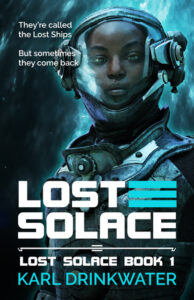
My Experiment
First, a caveat. No example will be representative of everyone, since results can vary by book, price, site, and when the promo takes place. But it can still give an indication of whether something is likely to work for you if you are in the same position. For this experiment my book was reduced to $0.99 for the promos.
In order to give some context, the book I advertised was Lost Solace. Genre: space opera. It has over 700 ratings on Amazon and Goodreads combined, with an average score of 4.2/5. The book was a semifinalist in the international SPSFC science fiction competition in 2022.
I only chose services that didn’t force you to create an account with them for a one-off promo. Since reporting is often slightly delayed I would leave a few days between each. Sometimes I had to make that longer because the dates I wanted weren’t available.
Tip: if using a promo site you must subscribe to the service as a reader before your promo date arrives. Then you can see what the readers will see, and make sure your book appears as promised, with no mistakes. Even better: subscribe to the service before paying anything. Then you can check out the quality of its newsletters, how well laid out they are, whether the links all work. You can see whether they segment lists by genre and/or format/vendor. These are all indications of how much care and attention they pay to their newsletters.
The Results
I’ll list the dates, the cost of the promo, the results in terms of royalties, and any policies that can be useful to the author if it fails. The latter were quotes from emails with the service providers.
For the results, it is the amount the promoted book earned in royalties over the two days of the promo, minus the baseline of averaged sales from the previous sixty days i.e. the amount the book would have made without any promotion. This helps to identify any impact the promo had. This methodology means the site may well be credited with sales that were nothing to do with its promo, so the reality is probably less impact than I recorded.
2023-03-29 EreaderIQ
- Cost: $10
- Royalties: $1.49
- Loss: $8.51
Policy: “As far as refunds go, we do not post a refund policy. I get asked for a refund maybe once a month. Depending on the situation, I sometimes grant the refund or, in most cases, offer to re-run the book for free in a different category or at a future date.”
Outcome: They shared the book again 2023-05-09, though resharing was unlikely to do anything different the second time around – it is the same list, after all. That second time it made $1.39. So royalties from the two promos were $2.88.
Total loss: $7.12
2023-04-04 Bargain Booksy
- Cost: $40
- Royalties: $3.87
- Loss: $36.13
Policy: “We'd be happy to offer a 100% off discount code for a Bargain Booksy feature in the genre of your choosing (excluding Deal of the Day features).”
Outcome: They shared a different book in order to hit a different genre 2023-04-17. That book made $4.24.
So royalties from the two promos were $8.11
Total loss: $31.89
2023-04-15 ENT ereadernewstoday
- Cost: $40
- Royalties: $3.04
- Loss: $36.96
- Policy: “A loss that you experienced is not common and we do not offer refunds per our terms of service.”
Total loss: $36.96
2023-04-27 Robin Reads
- Cost: $60
- Royalties: $4.56
- Loss: $55.44
Policy: “Hello- so sorry to hear that- we went ahead and refunded the order!”
Note: they were helpful and once I’d shared screenshots from my dashboard (which I did for every promo service I tried), and left it a few more days in case delayed sales reporting, they just went ahead and refunded it. I consider that exemplary customer service.
Total loss: $0!
2023-05-04 Book Barbarian
- Cost: $40
- Royalties: $13.20
- Loss: $26.80
Policy: “We don’t offer refunds at this time.”
Total loss: $26.80
So, total losses for the experiment (incorporating the Robin Reads refund, and being generous with the idea that any sales were all from the promo): $105.77 / £84.62
Closing Thoughts
If something only costs time then it may be worth trying, but dip your toe in to paid things with care. We see people at the top of the indie success hierarchy doing wonderful things, and we emulate them but often need to follow the idea, not the letter. For example, Shopify can be great for a successful author, but if you are new then it can be an awful option costing you more money per month than you make in sales. In those cases a service like Gumroad (which doesn’t charge for its service) is a much more feasible option.
When I shared these results with fellow authors (for example, in various online groups) I got the impression that my experiences weren’t outliers. Apparently many authors had found these promo sites (whether singly or stacked) to be a total loss, even on well-reviewed books with more ratings than my own! And perhaps that’s why it is so useful to share our experiences in every area of publishing and marketing, to separate the glossy promises from the reality, and to identify services which may be overpriced for what you get, especially without any minimum impact guarantees. There are definite dangers in terms of how things are presented to new indie authors who are often desperate to sell books or reach audiences.
Final Book Promotion Thought: One Thing A Day
Structure your book promotion so you do one thing a day to sell more books. Devise tasks that are achievable in a realistic time frame. Just like you can exercise effectively in just fifteen minutes per day or learn to write your book in fifteen-minute increments, so too can you promote your books in small increments of time.
What could you do in fifteen minutes? It might be tweaking some of your marketing autoresponders or newsletters, or refining your Amazon Author Central entry, or connecting into your Goodreads group but make sure you are also making room for actual promotion tasks, i.e. something that sells more books.
You might research and pitch a book influencer; apply for a promotion on an ebook discovery site, set up a new ad or asset on Facebook or Instagram.
Doing one thing a day will make you productive in your promotion and drive momentum. When you do small promotional tasks frequently, it takes less energy than when you approach it as this huge thing that goes against your creative grain.
You're building your skills as a book promoter and as you do, you begin to actively enjoy it.

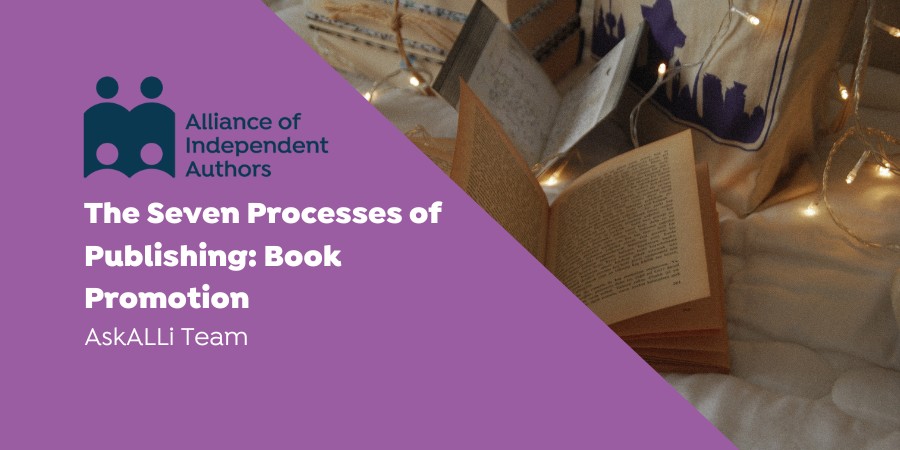
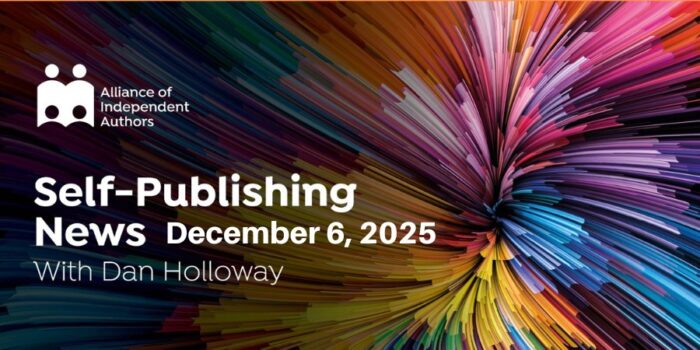
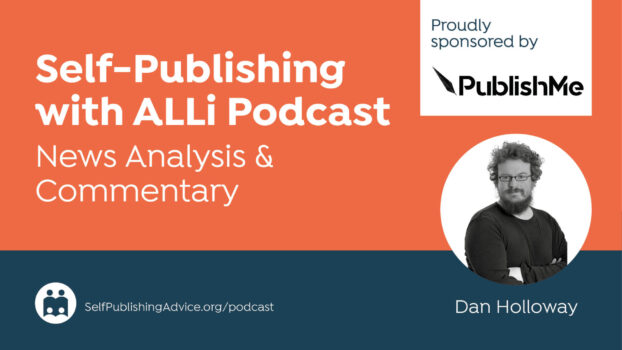

In depth information about book promotion. Like, in particular, suggestion to implement a daily input toward advertising/promotion. I first published in 2015. Last year I made better sales than before, but I was more active on the promotional front. This year -2023 – my pre – book publication led to contacts from a journal editor and library service. My existence as author, novelist, writer etc.. is known about ! Interesting about reader interest. My 2017 romantic novel from 2017 just popped up with stars on Amazon. The novel was appreciated on publication by an American Kindle site then vanished into obscurity for five years. It probably suggests that prmotion and marketing would have achieved sales on publication. I enjoy the process of developing and bringing a novel to publication, but do need to devote more time to promotional activity. Write as Sam Grant. Latest book -Short Story, Verse, Commentary by Colin H Coles, in May 2023. Decided to go with birth name and have received a message from Penguin books. They probably message all “new author” names!
Great information Thanks for sharing this article.